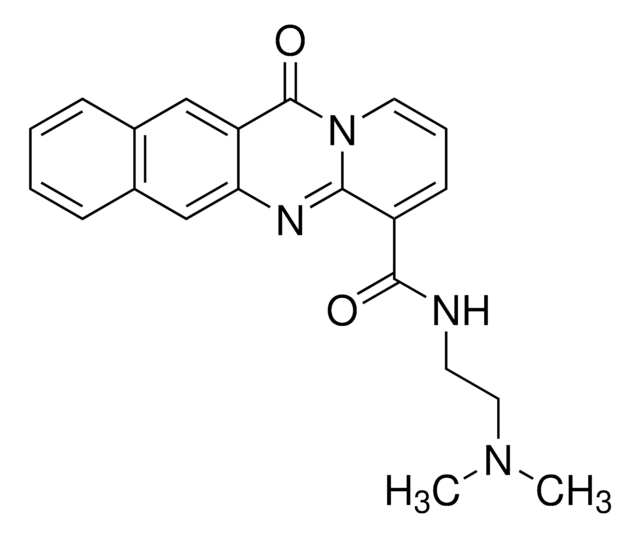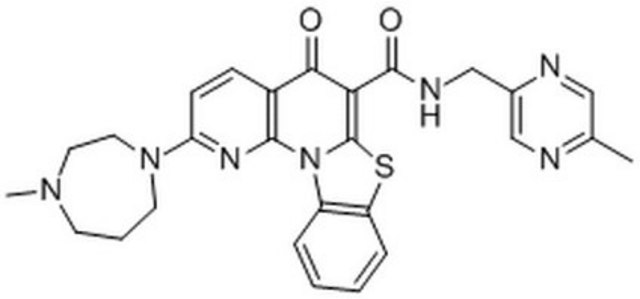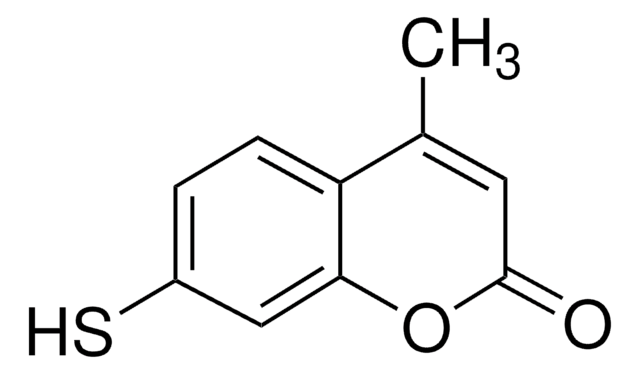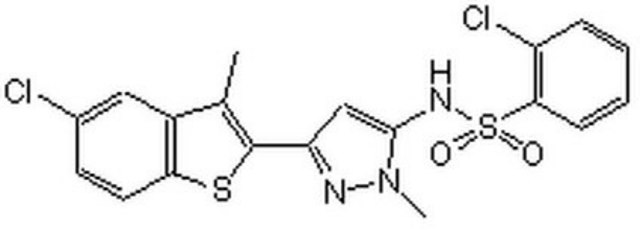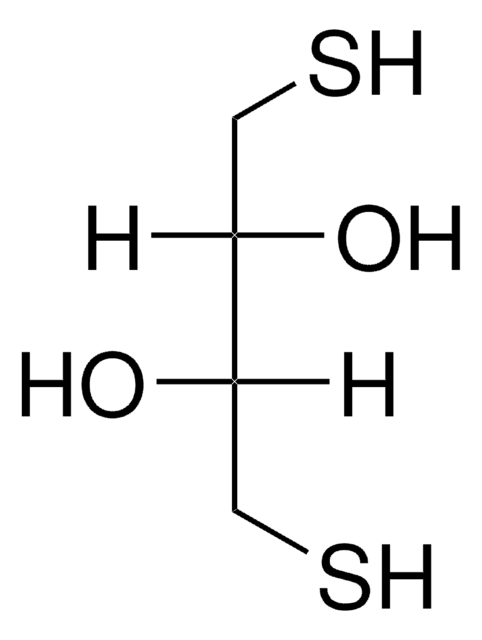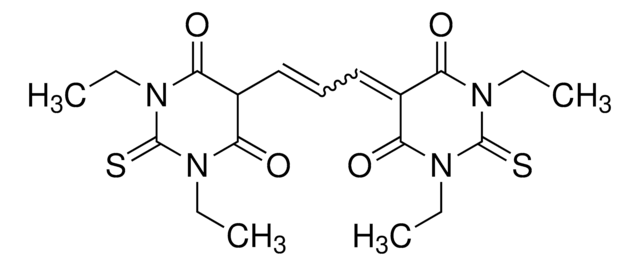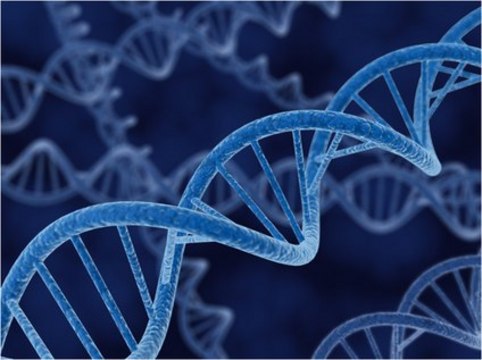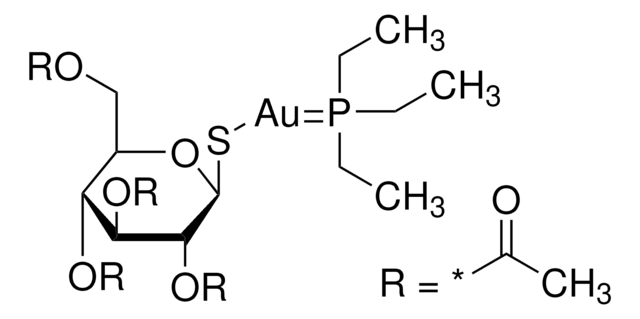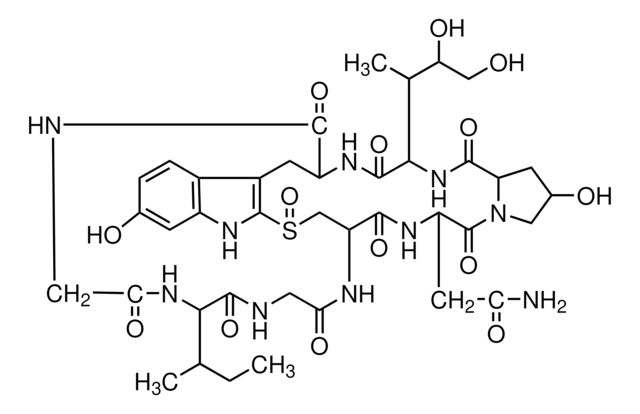All Photos(1)
Synonym(s):
RNA Polymerase I Inhibitor II, BMH-21, BMH21, rRNA Transcription Inhibitor II, N-(2-(Dimethylamino)ethyl)-12-oxo-12H-benzo[g]pyrido[2,1-b]quinazoline-4-carboxamide, N-(2-(Dimethylamino)ethyl)-12-oxo-12H-benzo[g]pyrido[2,1-b]quinazoline-4-carboxamide, BMH21, rRNA Transcription Inhibitor II
Empirical Formula (Hill Notation):
C21H20N4O2
Recommended Products
Assay
≥98% (HPLC)
Quality Level
form
powder
manufacturer/tradename
Calbiochem®
storage condition
OK to freeze
protect from light
color
orange-yellow
solubility
DMSO: 1 mg/mL
5% acetic acid: 25 mg/mL
storage temp.
2-8°C
General description
A cell-permeable, non-toxic, benzopyridoquinazoline-carboxamide compound that blocks the growth and viability of a variety of cancer cell lines (GI50 = 160 nM in NCI-60 cells), but does not significantly affect normal cells (~90-fold therapeutic window). Preferentially binds to the GC-rich DNA and inhibits RNA polymerase I (Pol I) transcription. Although it intercalates with DNA, it does not activate the DNA damage response. Induces a proteasome-dependent destruction of large Pol I catalytic subunit RPA194, independent of TP53 genetic status of cancer cells, leading to disassembly of Pol I holocomplex from the rDNA. However, it does not affect Rpb1, the large subunit of RNA polymerase II and Pol I preinitiation complex proteins. Effectively reduces the growth of A375 and HCT116 xenografts in athymic NCr nu/nu mice (50 mg/kg, i.p, 2 weeks).
Please note that the molecular weight for this compound is batch-specific due to variable water content.
Please note that the molecular weight for this compound is batch-specific due to variable water content.
A cell-permeable, reversible DNA-intercalating benzopyridoquinazoline-carboxamide that preferentially targets GC-rich sequence, notably that of rDNA (162% of average human genome GC content), and effectively inhibits RNA polymerase I- (Pol I) mediated rDNA transcription both in cell-free assays and in cultures (IC50/ICmax = 60 nM/≤1 M against 2-h de novo 47S transcription in A375 cells) without affecting the maturation/processing of 47S into 32S and 18S rRNA. Time-dependent studies in 1 M BMH-21-treated A375 cells reveal fast inhibition of nuclear RNA synthesis (FUrd incorporation) within 15 min, followed by progressive altered localization of nucleolar proteins (starting in <20 min), including Pol I subunit RPA194 capping structure formation, indicative of stalled Pol I complex, and eventual proteasome-mediated RPA194 degradation (>1 h). Although BMH-21 activates p53 independent of DNA damage-sensing ATM pathway signaling in A375 cultures, wt p53 is not a prerequisite for BMH-21 anticancer activity (Av GI50 = 110 nM/wt and 205 nM/mutant among NCI60 cancer panel). Intraperitoneal injection is demonstrated to be efficacious in suppressing A375 (25 & 50 mg/kg/d, 6d/wk) and HCT-116 (50 mg/kg/d, 7 d/wk) tumor growth in mice in vivo. MG-132 (Cat. Nos. 474790, 474787, 474788, and 474791) effectively prevents BMH-21-induced RPA194 degradation without restoring stalled rRNA synthesis.
Biochem/physiol Actions
Cell permeable: yes
Primary Target
rDNA
rDNA
Reversible: yes
Packaging
Packaged under inert gas
Warning
Toxicity: Standard Handling (A)
Reconstitution
Following reconstitution, aliquot and freeze (-20°C). Stock solutions are stable for up to 6 months at -20°C.
Other Notes
Peltonen, K., et al. 2014. Cancer Cell25, 77.
Peltonen, K., et al. 2010. PLoS One5, e12996.
Peltonen, K., et al. 2010. PLoS One5, e12996.
Legal Information
CALBIOCHEM is a registered trademark of Merck KGaA, Darmstadt, Germany
Signal Word
Warning
Hazard Statements
Precautionary Statements
Hazard Classifications
Acute Tox. 4 Oral
Storage Class Code
11 - Combustible Solids
WGK
WGK 3
Flash Point(F)
Not applicable
Flash Point(C)
Not applicable
Regulatory Information
新产品
Certificates of Analysis (COA)
Search for Certificates of Analysis (COA) by entering the products Lot/Batch Number. Lot and Batch Numbers can be found on a product’s label following the words ‘Lot’ or ‘Batch’.
Already Own This Product?
Find documentation for the products that you have recently purchased in the Document Library.
Our team of scientists has experience in all areas of research including Life Science, Material Science, Chemical Synthesis, Chromatography, Analytical and many others.
Contact Technical Service